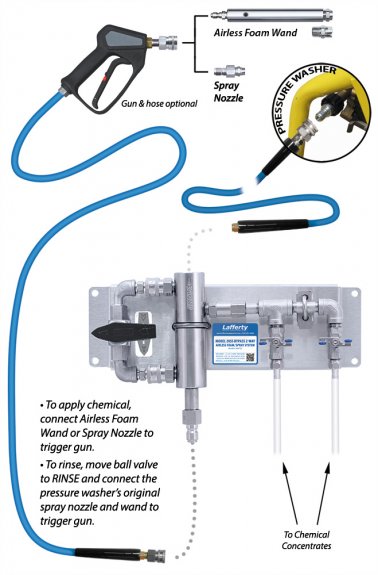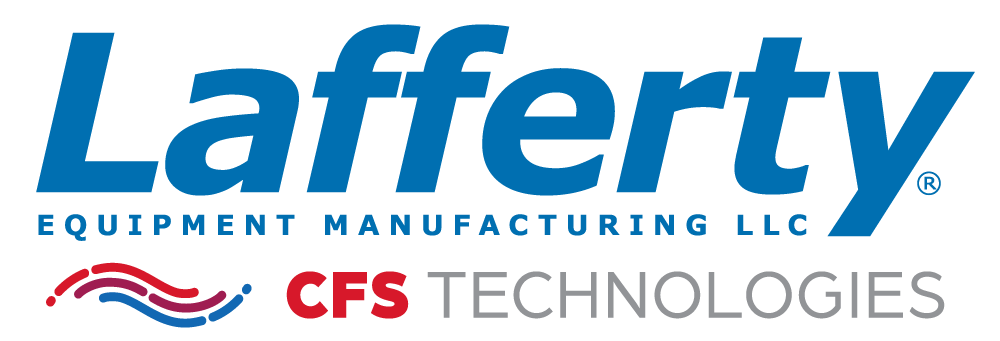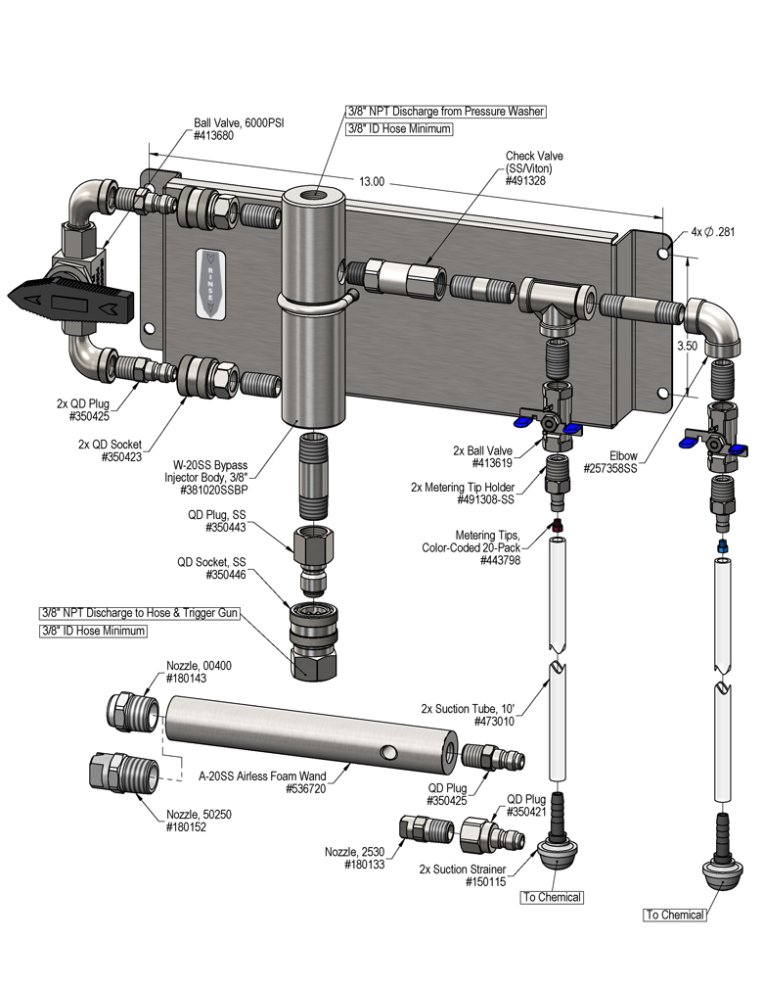| Water Temperature | up to 180°F |
| Pressure Washer | 3.5 - 5.5 GPM |
| Discharge Hose |
3/8" ID minimum Up to 200' length |
Lafferty Equipment Manufacturing, LLC
Installation & Operation Instructions
Model # 969752 · Model 20 SS Bypass 2-Way Airless Foam/Spray System (NO HOSE)
Requirements
Overview
Designed for 3.5–5.5 GPM pressure washers. The Model 20 SS Bypass 2-Way Airless Foam/Spray System is a wash/rinse system for quickly diluting and applying two chemicals and rinsing through the same hose. This venturi unit draws and blends two separate chemicals or two different concentrations of the same chemical into the water stream to create an accurately diluted solution. The solution then flows through the hose and gun to the airless foam wand which draws in atmospheric air to create and project wet, clinging foam on to surfaces up close or at distances up to 25 feet with interchangeable fan and zero degree nozzles. Quick connect the fan pattern sprayer nozzle to apply non-foaming chemicals. Open the bypass ball valve to rinse at full volume and pressure.


